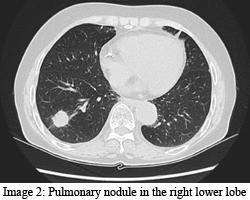January 19, 2015 - Windsong Radiology Group, located in Buffalo, NY, announced this week that it has been designated a Lung Cancer Screening Center by the American College of Radiology (ACR).1 Windsong Radiology represents the growing number of radiology centers implementing a low-dose computed tomography (CT) lung screening programs on the heels of the National Lung Screening Trial (NLST) showing a reduction in lung cancer mortality in high-risk patients aged 55 to 74 who were screened with low-dose CT rather than chest x-ray.
Until recently, insurance has not covered CT lung screening despite results from the NLST, and the need to pay out-of-pocket costs, ranging upwards from $400, has been the primary hindrance to patients getting CT lung screening. Nonetheless, Windsong Radiology has for the last three years offered low-dose CT screening for lung cancer detection. The group's designation as a Lung Cancer Screening Center by the ACR follows a new mandate that Medicare and insurance companies must cover CT lung screening for those ages 55 to 74 who smoked a pack or more a day for 30 years and continue to smoke, or have quit within the last 15 years.
Effective January 1, 2015, both Medicare and insurance regulated by the Affordable Care Act have begun to offer coverage for people at high risk for lung cancer, and third-party payers are now required to cover lung cancer screening with CT services. With lung cancer screening CT as a covered benefit, the approximately 10 million individuals in the U.S. who are estimated to meet the eligibility criteria for lung cancer screening CT will be able to undergo CT screening.
The accreditation means Windsong Radiology will be required to provide follow-up patient care – including counseling and smoking cessation programs.

The use of CT instead of radiography for lung screening is a growing trend largely due to the findings from the NLST study, according to Ritu Gill, MD, MPH, an associate radiologist at Brigham and Women's Hospital (BWH), and Francine L. Jacobson, MD, MPH, director of lung cancer screening at BWH in Boston, in a recent interview with Radiology Today.2 There are, however, several challenges to implementing a high-quality preventive health service, reports authors from a recently published study.3
Taking a cue from mammography screening, awareness and patient compliance is an important consideration, points out one of the authors of NLST, Ella A. Kazerooni, MD, Professor of Radiology, Associate Chair for Clinical Affairs, Director of Cardiothoracic Radiology and Chair of the Radiology Service, University of Michigan Health System, Ann Arbor, MI.
“In addition to reimbursement, I think public awareness is very important. If we take a lesson from mammography and breast cancer screening, even today after several decades of practice compliance rates vary from approximately 40-70% and the growth of mammography took many years to decades to increase knowledge about patients and providers. The same will likely occur with lung cancer screening CT," said Dr. Kazerooni.
“Radiologists should be part of a multidisciplinary program, which includes a champion physician, which is often in pulmonary medicine, associated with a lung cancer screening clinic, where patients who have abnormalities that are of moderate or high suspicion for cancer can be managed. It is also appropriate that radiologists work with their referring physicians and their provider base to make sure only individuals appropriate to screen are referred,” she says.
Dr. Kazerooni notes that when radiologists are interpreting exams they should use structured reporting and structured management recommendations, so that their referring physicians understand the significance of the findings and what to do with them once they are reported.
She added that patient compliance with CT lung screening programs might be accelerated by the use of EMRs with prompts for at risk individuals, and by education about the other significant findings that can be detected such as emphysema and coronary artery disease.
Windsong plans to hire a patient navigator as part of the process of implementing its low-dose CT lung screening program and will talk to regional insurance providers to encourage them to cover the cost of the low-dose CT scans.
“All of this requires collaboration with clinical colleagues in specialty areas like pulmonary medicine and thoracic surgery, and educational outreach to the large base of general practitioners who ultimately manage a patients’ care as part of medical homes and will refer patients for lung cancer screening CT,” adds Dr. Kazerooni.
For more information about CT lung screening, visit nccn.org/patients/guidelines/lung_screening, windsongradiology.com, or call Windsong at 631-2500.
Sources:
- Windsong Radiology is designated as lung cancer screening center. The Buffalo News. Jan. 17, 2015. http://www.buffalonews.com/life-arts/refresh/windsong-radiology-is-designated-as-lung-cancer-screening-center-20150117
- Loria K. Lung Cancer Screening's Changing Tide. Radiology Today. Vol. 16 No. 1 P. 26. http://www.radiologytoday.net/archive/rt0115p26.shtml#sthash.4W8DUeoV.dpuf.
- Mulshine JL1, D'Amico TA. Issues with implementing a high-quality lung cancer screening program. CA Cancer J Clin. 2014 Sep-Oct;64(5):352-63. doi: 10.3322/caac.21239. Epub 2014 Jun 27.




